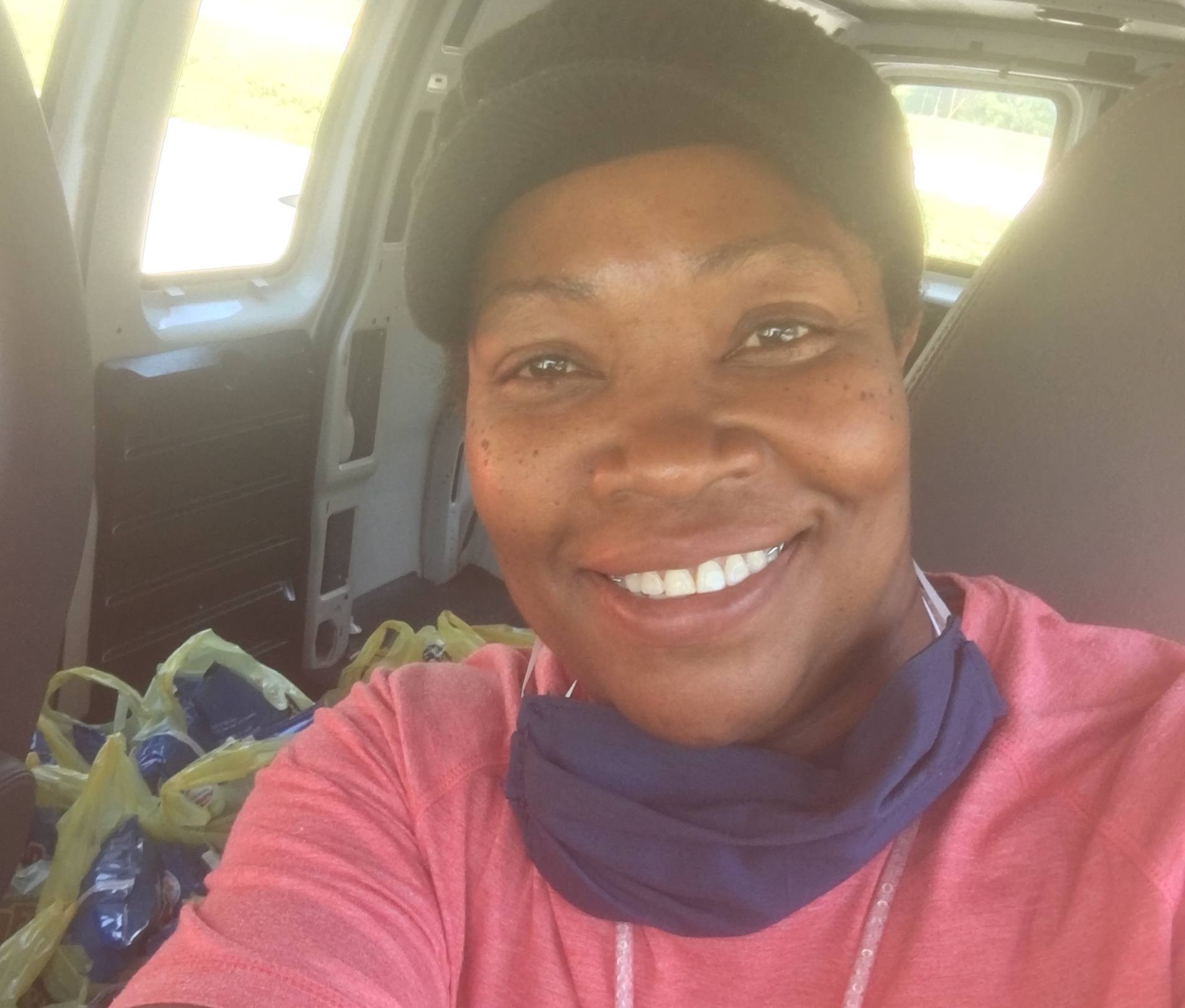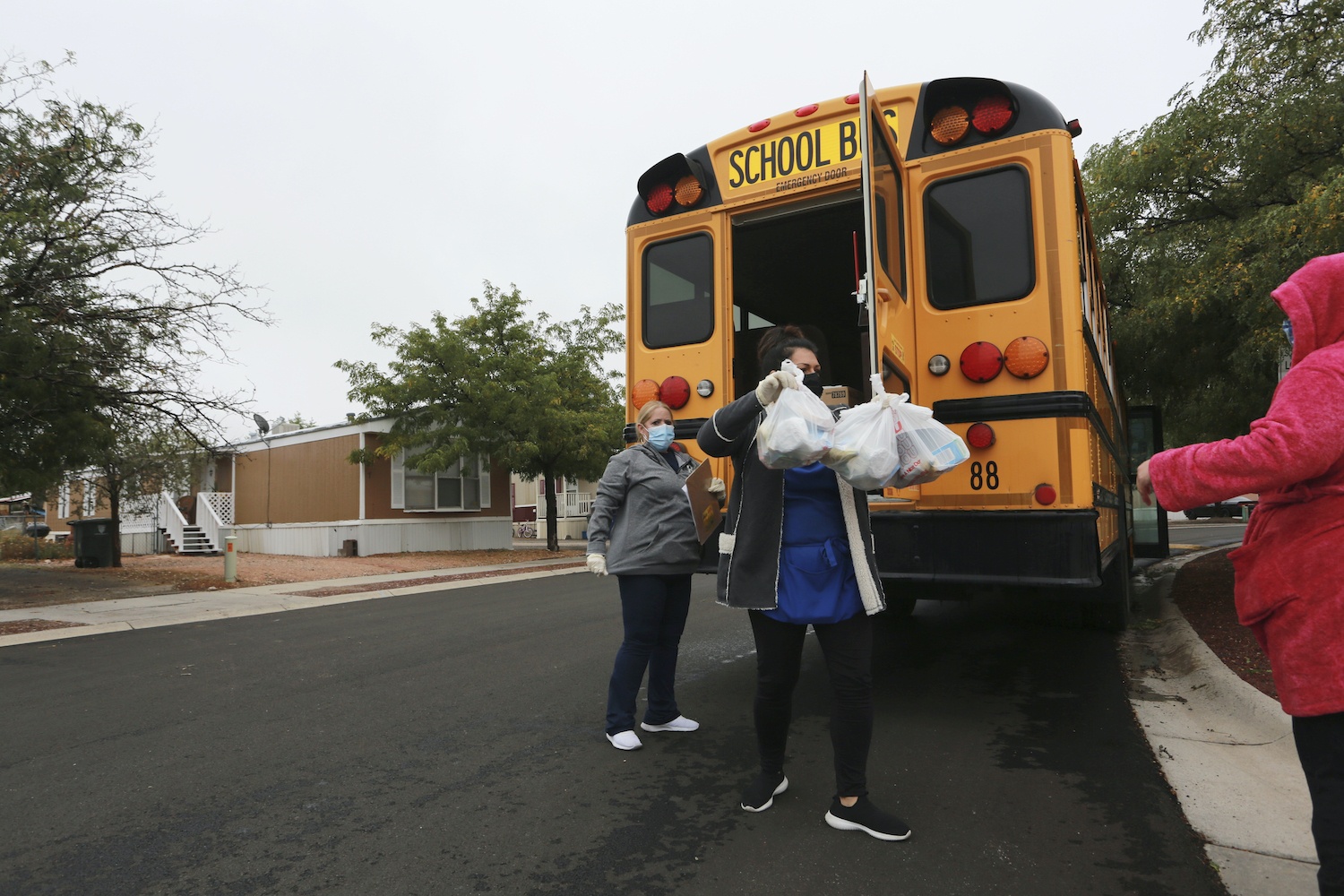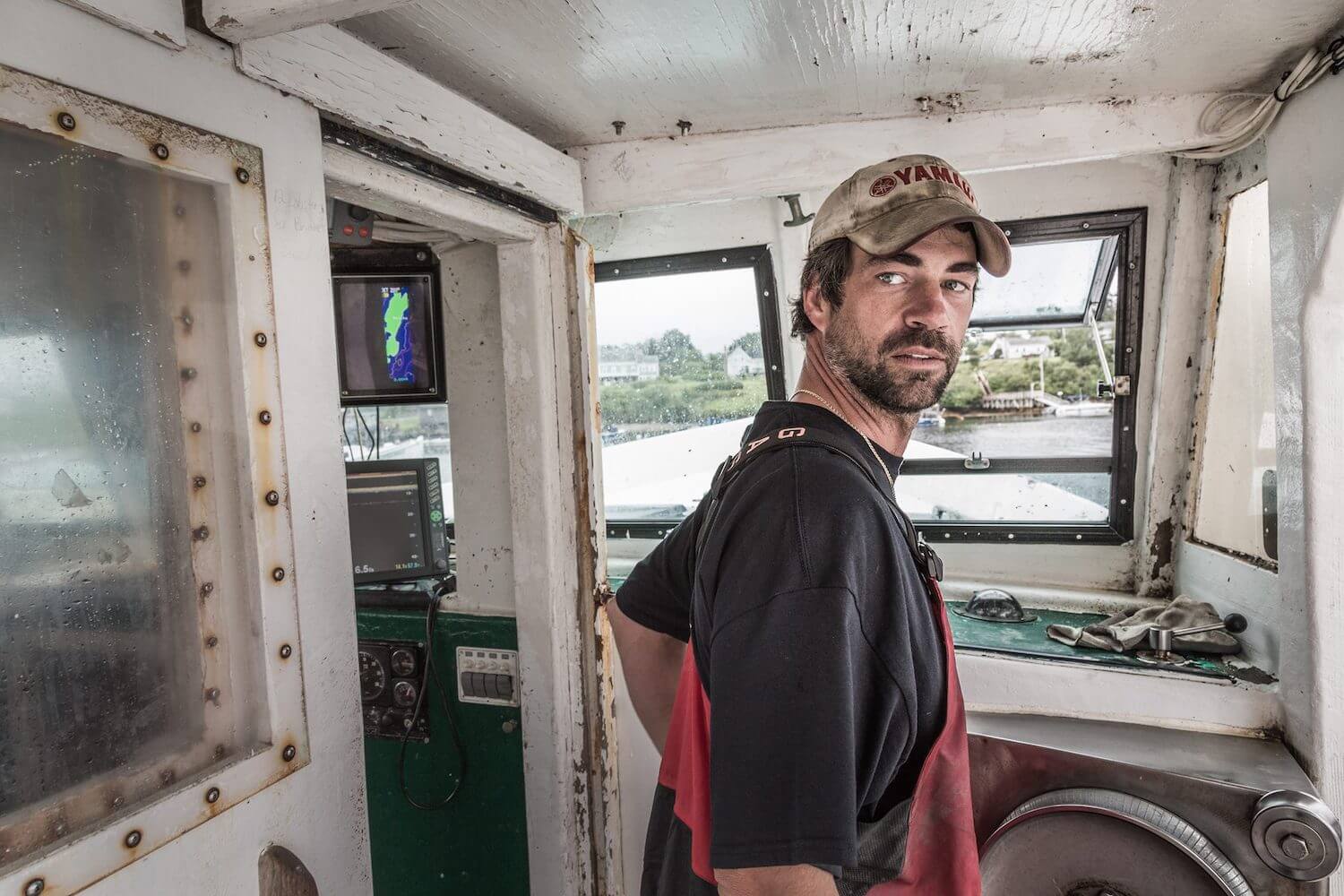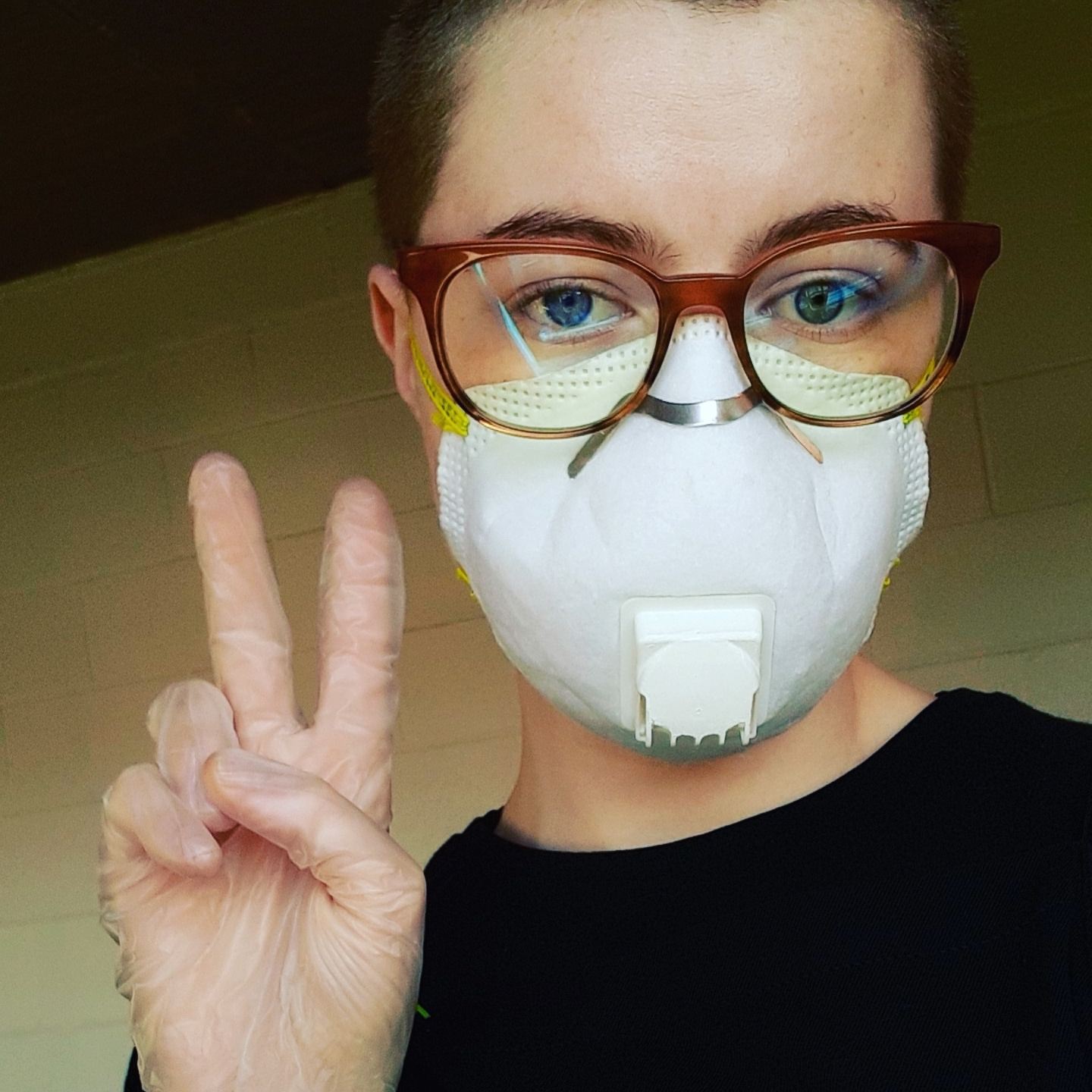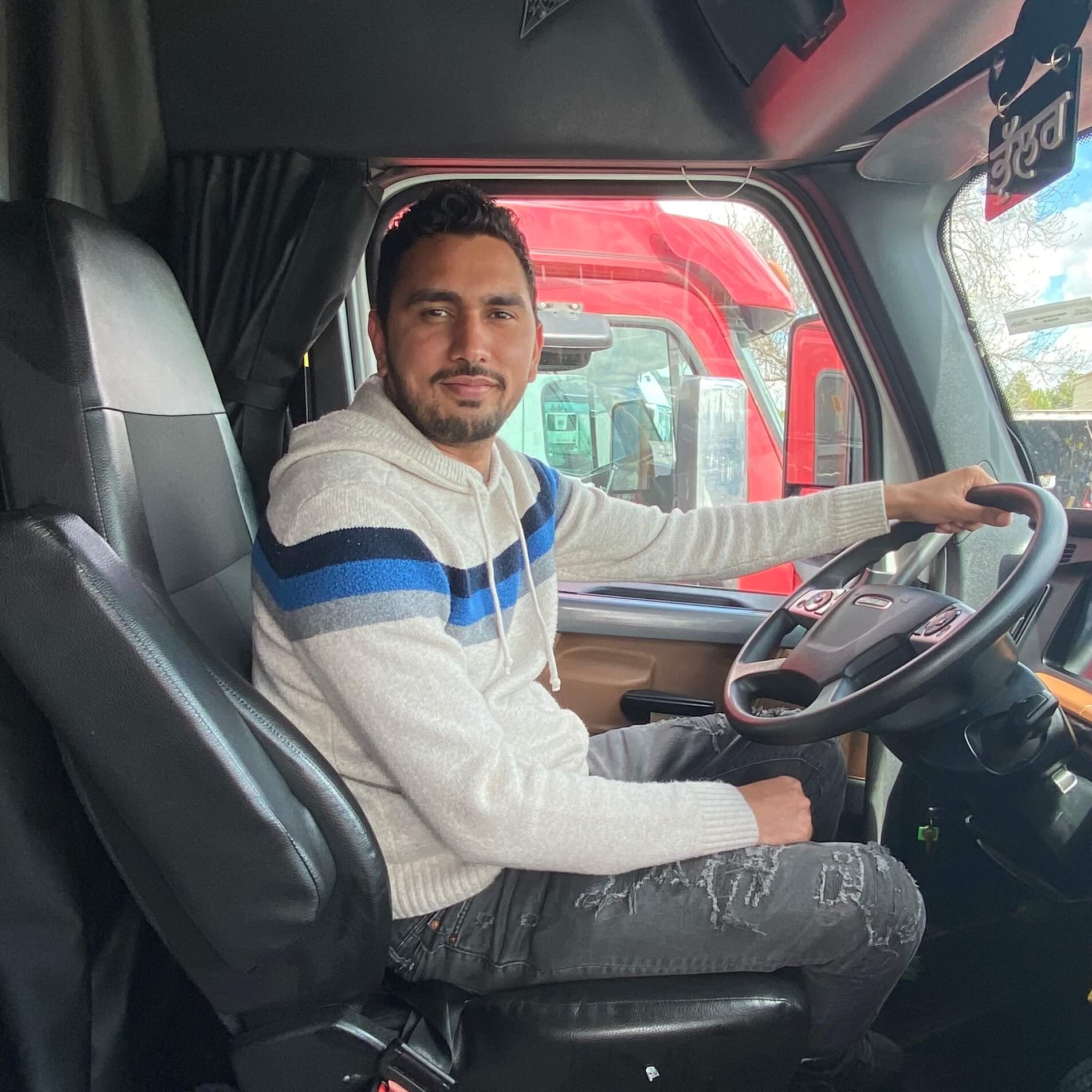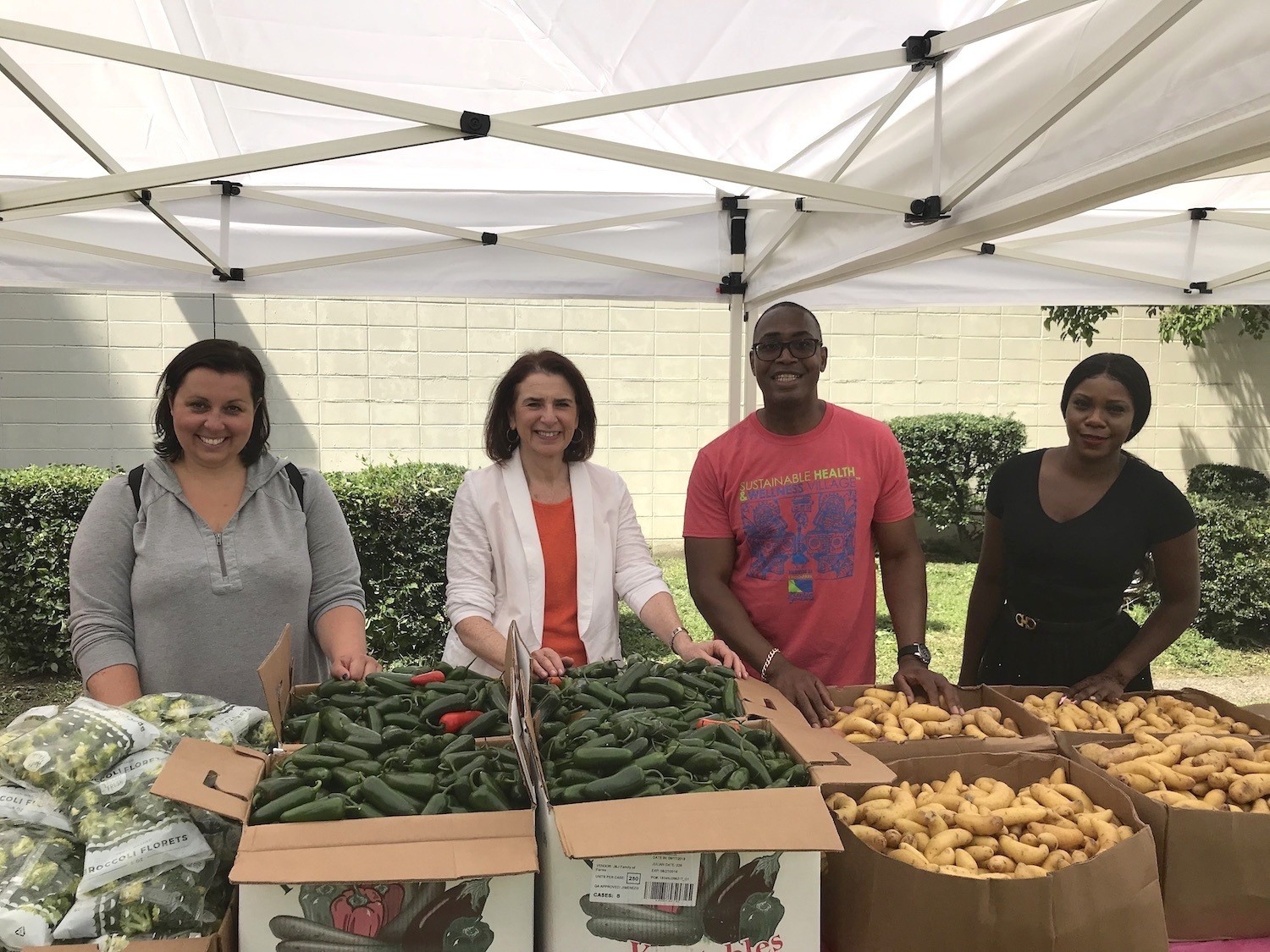
Courtesy of Ilene Isaacs
When Ilene Isaacs started, she didn’t really know what food rescue was; only that she wanted to help eradicate hunger. Now she’s an anti-hunger advocate with 18 years’ experience and 250 agencies relying on her work.
Table to Table, a food-rescue organization in New Jersey, intended to deliver 27 million meals in 2020. But the global pandemic left millions of families hungry and food-insecure. Table to Table has already delivered close to 30 million meals, three months from the end of the year.
Pictured above, Ilene Isaacs, center, is the executive director of Table to Table, a food-rescue organization in New Jersey.
The community-based organization could do even more, if it had more. Executive director Ilene Isaacs, whose default attitude is exasperation at any food that goes to waste, recalled one distribution site where 500 people lined up for produce—and 200 of them went home empty-handed because there wasn’t enough to go around.
“Food rescue” is what it sounds like. When grocery stores or restaurants throw away perfectly good, fresh food, Table to Table saves it by the truckload, and delivers it at no charge to smaller food banks or schools or nursing homes that provide it to community members.
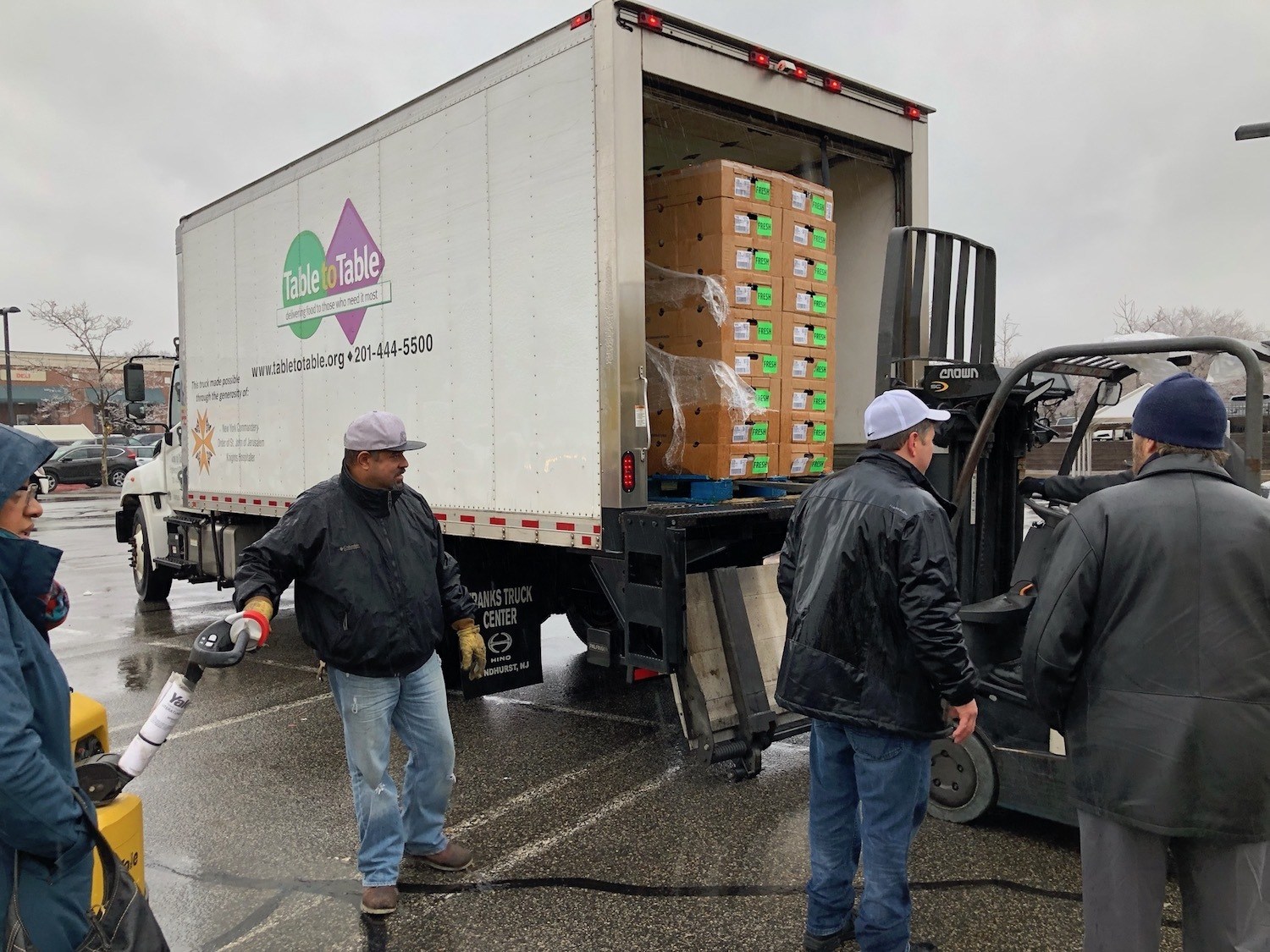
This year alone, Table to Table has already delivered close to 30 million meals to food insecure residents.
Courtesy of Ilene Isaacs
Table to Table has rescued and delivered food since 1999, and currently has seven 26-foot refrigerated trucks in northeast New Jersey, in and around Newark, a largely Black and Hispanic city that is home to some of the state’s poorest residents. Before the pandemic, 28 percent of the city’s residents lived in poverty, according to the census. But food insecurity has doubled nationwide since the start of the pandemic, and tripled in families with children, according to Northwestern University’s Institute for Policy Research.
And New Jersey’s neediest zip codes are a short drive from its wealthiest, making Table to Table’s work possible. Need and financial support are often neighbors.
Food insecurity has doubled nationwide since the start of the pandemic, and tripled in families with children.
When Isaacs joined the team in 2002, she didn’t really know what food rescue was; only that she wanted to help eradicate hunger. As a former school psychologist, she believed that had to come first. It wasn’t possible to help people with other problems if they were hungry.
Now, she’s a seasoned anti-hunger advocate with 18 years’ experience. Studies have shown that America wastes 40 percent of its food. And during the peak pandemic months, food that had been produced to the specifications of global food retailers and institutional kitchens had to be dumped and plowed under fields because it couldn’t be rerouted to service other markets. Isaacs is more determined than ever to get it to people who need it.
—
We have seven drivers and five people working in the office. Depending on the day, we have six or seven trucks out on the road. They have regular routes: they stop at places that donate—the distributors or supermarkets—and they drop the food off to shelters or pantries or schools.
Our drivers are not your typical driver. They are not just picking something up from point A and delivering it to point B. The drivers become a part of the fabric of the communities that they’re going to. They know the different directors. If there’s a school on their route and there’s an extra pallet of apples on the truck, they’ll make sure it gets to the school. I always say they are part social worker, part public relations.
More need, more food, more options
At the beginning of Covid, many of the agencies that we bring food to closed because they couldn’t get volunteers and were concerned about their exposure. We had all this extra produce, and we asked, how can we save it for people to have later?
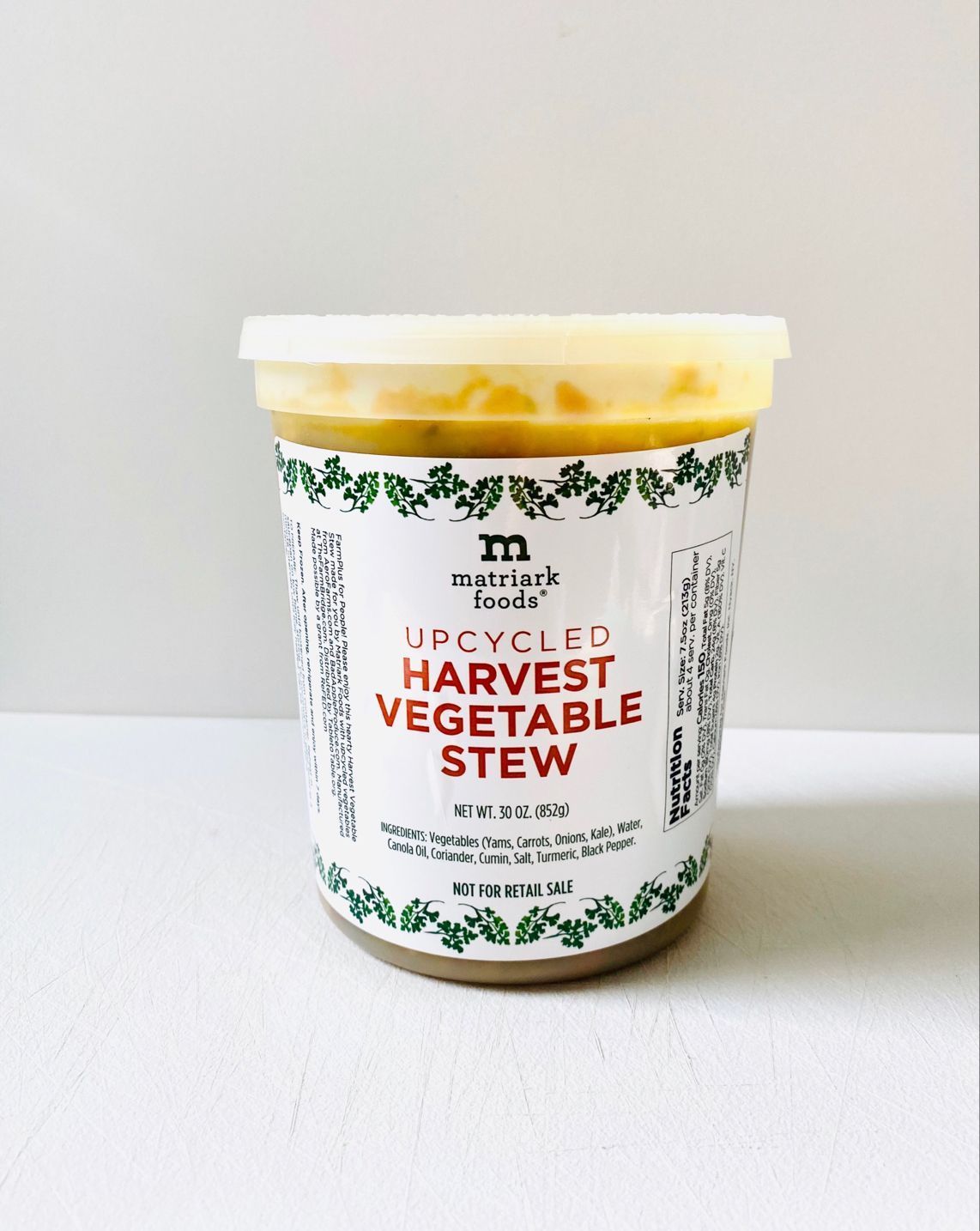
Courtesy of Ilene Isaacs
Matriark Foods partnered with Table to Table by upcycling its produce and turning potential food waste into frozen stews.
And that was the genesis of a project we did, a unique partnership between a non-profit and a for-profit organization. We each brought our own strengths: Matriark Foods, a business started two years ago by a woman from the non-profit world with a similar mission, to prevent food from going to waste, upcycles food waste for soups and stews and shelf-stable items that it provides to schools, hospitals, and food banks. And we have the logistics and partnerships to source food that is still good to eat but can’t be sold. So Matriark took our produce and turned it into frozen stews. And we stored them in our freezer warehouse space.
By the end, we were able to distribute 7,900 four-serving containers of this wonderful vegetable stew. They were packaged in plastic quart containers with attractive labels, like you get soup from a grocery. It was a nice thing for people to receive and bring home. We gave it to lots of different organizations and people seemed extremely pleased.
The drivers become a part of the fabric of the communities that they’re going to.
Subsequently the agencies got back-up, so the issue of us having too much extra food was not an issue at all. The greatest question is can we do it again: We received funding from ReFED, a national non-profit, to do the project. We would love to be able to do it again, but it will require more fundraising.
The demand is just extraordinary. The biggest difference is that people who never before in their lives needed assistance with food now do. People getting on line may have no idea about the system, no idea about how the distribution works. They just know their family is hungry and they need to find a way to feed them.
And the saddest are the families that were just making it, those who had pulled themselves into a position where they had jobs and apartments and were able to feed their families. And they just had it all taken away from them. Now, the question is, will they ever get back to that point?
The dream: To be obsolete
Growing up in Brooklyn, I didn’t realize that access to food wasn’t as easy as it appeared to be. My mother was a great cook and was before her time in believing in the importance of vegetables and fruits and healthy food. She worked really hard to access it, even though we weren’t wealthy by any means.
I went to Brooklyn College and certainly being in college in the 70s helped me recognize the inequalities that existed. I learned at that point about the need and saw the need firsthand in my travels.
I was living in Ohio, planning on moving back to New Jersey, and I was here looking for housing when I saw a newspaper ad for Table to Table. I was intrigued: Food rescue made so much sense. The food is here. It will be wasted. But otherwise, it’s the best food that somebody could eat, the food that people need in order to be healthy and to grow and to develop and to thrive. So, I thought, that’s where I’ve got to be. And I’ve been at Table to Table for 18 years.
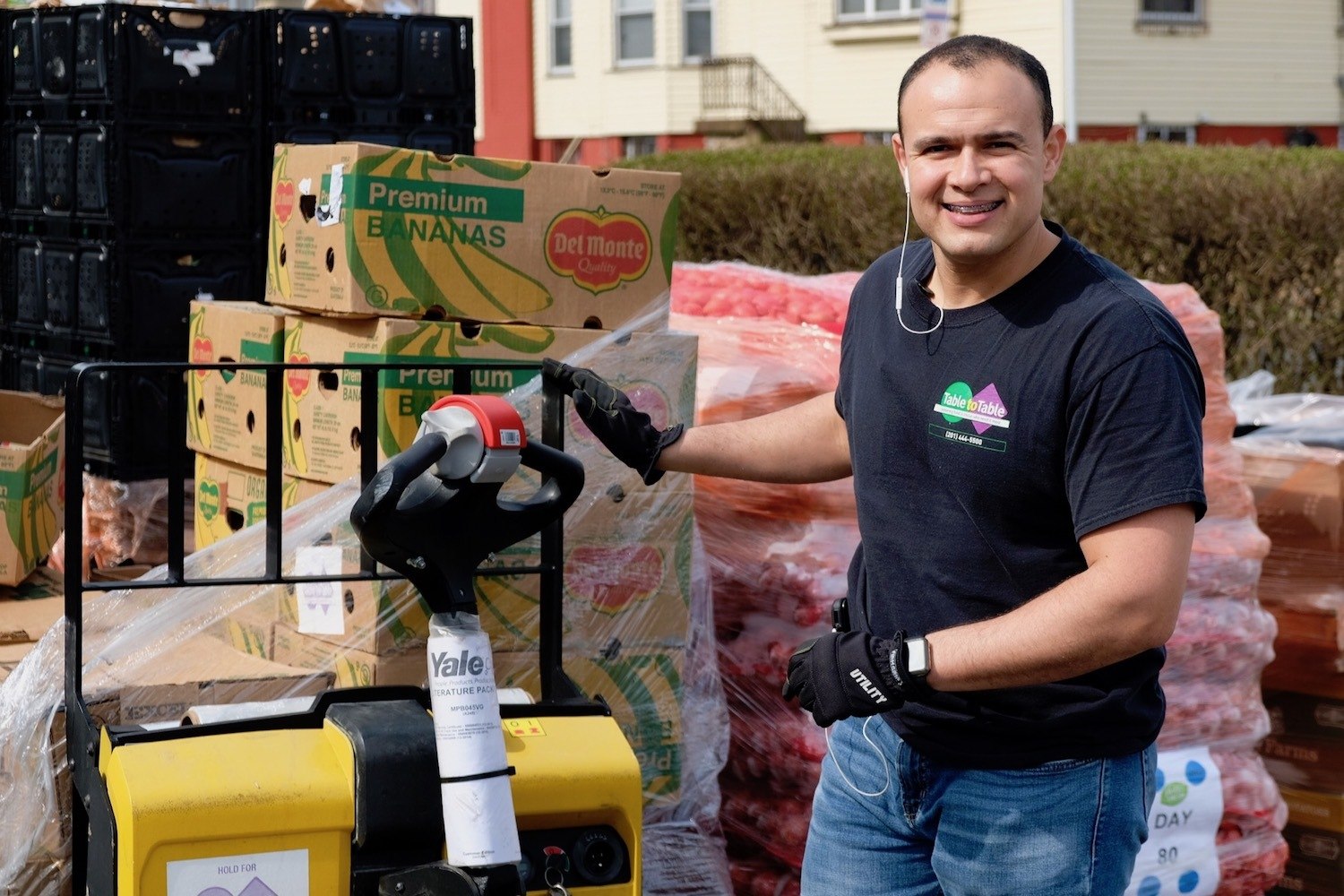
Table to Table’s food is donated from restaurants and grocery stores, and 250 agencies rely on its distributions.
Courtesy of Ilene Isaacs
At the time I didn’t realize the enormity of it. People think food rescue means you go to a restaurant and get a tray of leftover lasagna. I didn’t realize that there were pallets and pallets of food that were being wasted, that otherwise would have been thrown out. I didn’t recognize the hugeness until I started working with Table to Table.
Back then, there was a van and maybe we had a truck. We did small supermarket pickups and we were excited if there was a U-boat (an industrial cart, similar to a hotel luggage trolley). God, that seemed like a major pickup. Our trucks used to be 14-foot trucks. Now, if I even hint at getting a truck smaller than 26 feet, the drivers start yelling at me.
I didn’t realize that there were pallets and pallets of food that were being wasted, that otherwise would have been thrown out.
It was a big deal in 2002 when we rescued enough food for nearly 2 million meals. In 2003, it was nearly 3 million meals. And here we are in 2020 and we’re 60 percent over our 27 million meal goal.
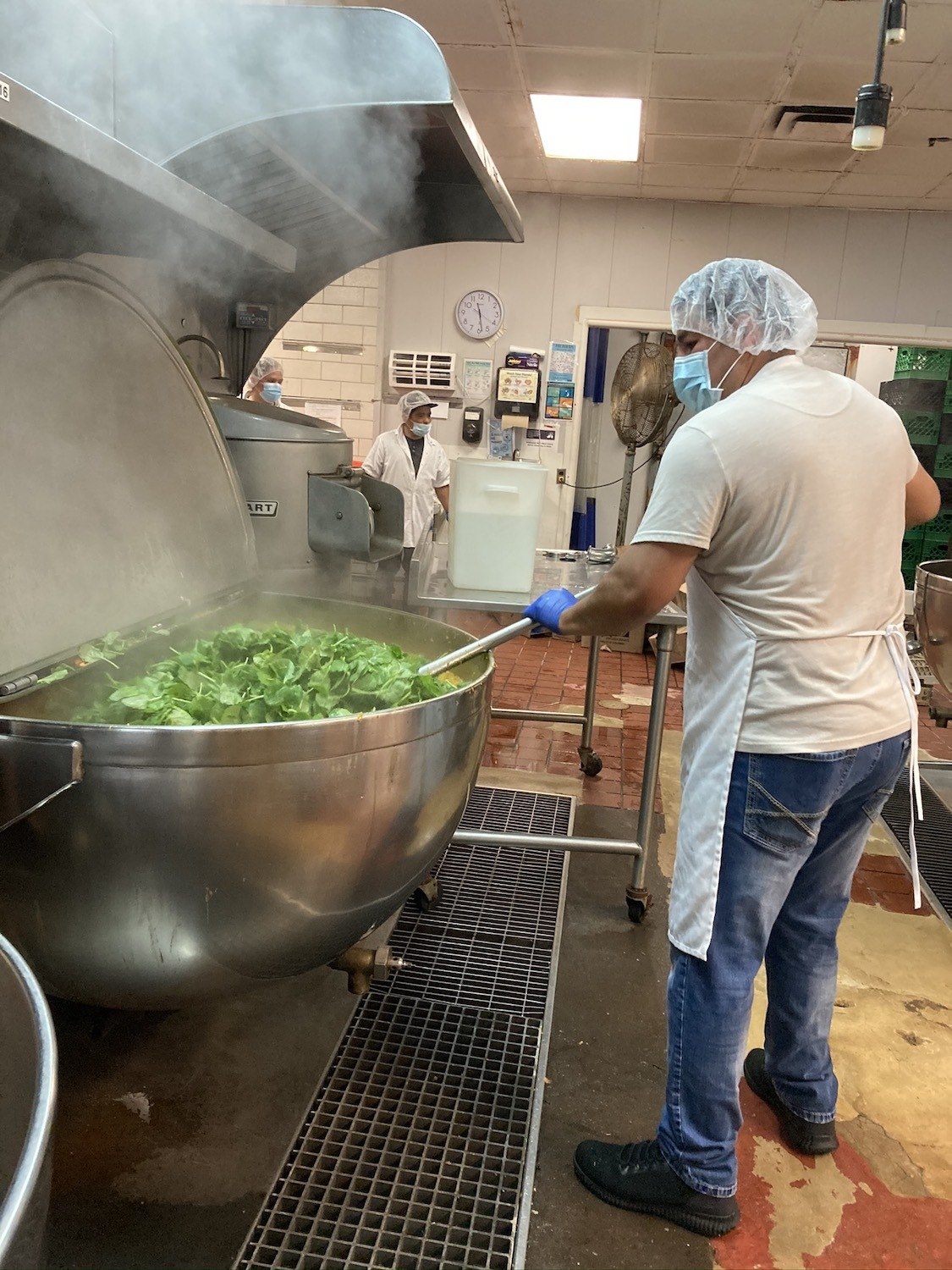
Courtesy of Ilene Isaacs
When grocery stores or restaurants throw away perfectly good, fresh food, Table to Table saves it by the truckload, and delivers it at no charge to smaller food banks or schools or nursing homes that provide it to community members.
We pick up food waste from distributors and supermarkets. But the truth is there is so much more on the farms. Farms are going fallow because there isn’t the opportunity to sell or to harvest the food, all while people are starving. There has to be some connection between the two. We pay farmers not to grow. Pay farmers to grow, instead, and get the food to the people who need it. And as importantly, this food is just going to go into landfills that are creating another problem in our society.
The food we get is donated, and we have 250 agencies that depend on us. My fear is that one day a distributor we count on is not going to have food for us. My biggest worry is that people will need the food and we can’t provide it; that there won’t be enough food.
I can’t walk into a supermarket here, if I know that it’s not one of ours, without talking to the manager or the owner to try to get them to consider donating food.
The happiest day of my life would be if there was no longer a need for our service. The happiest day by far.


